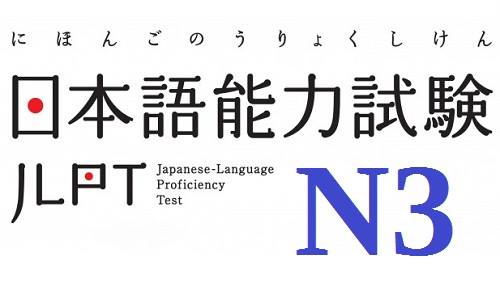JLPT N3 Grammar lesson 7
JLPT N3 Grammar lesson 7. Hi everyone! In this article, LearnJapanesedaily will introduce you to the JLPT N3 Grammar.
Let’s take a look at the next 5 structures.
Structure 31 :
NというN1
NというものNということ
Explanation:
A thing/event/person in the name of N.
To define things the listener doesn’t know of.
For example:
フォーという料理を食べたことがありますか。
Foo to iu ryouri wo tabeta koto ga arimasuka.
Have you ever eaten a dish called “Pho”?
「どろろ」という漫画を読んでいる。
“Dororo” to iu manga wo yonde iru.
I’m reading a manga called “Dororo”.
これはデジタルカメラというものです。
Kore wa dejitaru kamera to iu mono desu.
This is a digital camera.
Structure 32 :
NというのはNっていうのは
To explain the meaning:
Thing called N is ~
For example:
「ありがとう」というのは「Thank you」という意味です。
“Arigatou” to iu no wa “Thank you” to iu imi desu.
“Arigatou” means “Thank you”.
「禁煙」というのは何のことですか。
“Kin’en” to iu no wa nanno koto desuka.
What does “Kin’en” mean?
Structure 33 :
[文]普+というの/っていうの/ということ/っていうこと
Explanation:
This is called ~
To convert a sentence to a noun clause in order to make it the subject.
For example:
山田さんが会社を辞めるということは本当ですか。
Yamada-san ga kaisha wo yameru to iu koto wa hontou desuka.
Is it true that Yamada will leave the company?
日本語を勉強するというのは難しいです。
Nihongo wo benkyou suru to iu no wa muzukashii desu.
Studying Japanese is difficult.
うちの息子が歌手になりたいというのを知っています。
Uchi no musuko ga kashu ni naritai to iu no wo shitte imasu.
I know my son wants to be a singer.
Structure 34 :
V/Aい/Aな/N)普+というより/というかB
Explanation:
It is not even A ~ it is more like B.
Used to compare speculations or describe a situation. Also means “Saying A ~ is alright but saying B is more accurate”.
For example:
彼と一緒に踊るのは、踊るというより歩くようなものだ。
Kare to issho ni odoru no wa, odoru to iu yori aruku youna mono desu.
Dancing with him is more like walking than dancing.
彼らは友達同士というよりむしろ敵同士だ。
Karera wa tomodachi doushi to iu yori mushiro teki doushi da.
They are enemies rather than friends.
彼はお金がないというか、私に貸したくない。
Kare wa okane ga nai to iu ka, watashi ni kashitakunai.
It is not that he doesn’t have money, seems more like he doesn’t want to lend me money.
Structure 35 :
(V/N/Aい/Aな)普+というと/といえば/といったら Note:Nだ
Explanation:
Everytime talking about ~ to associate with / think of ~
To use an example to represent the topic in order to associate with that topic.
For example:
有名な画家というと、ゴッホでしょう。
Yuumeina gaka to iu to, Gohho deshou.
Speaking of famous painters, Van Gogh comes to mind.
人気がある漫画といえば、やっぱりドラえもんだね。
Ninki ga aru manga to ieba, yappari Doraemon da ne.
Speaking of popular manga, we should talk about Doraemon.
日本といったら、何を思い浮かべますか。
Nihon to ittara, nani wo omoiukabemasuka.
What comes to your mind when speaking of Japan?
Above are the JLPT N3 Grammar lesson 7. If there is anything that you find it hard to understand, feel free to common below.
Check out other JLPT N3 Grammar lessons in section: JLPT N3 Grammar
Stay with us on :
Facebook - Twitter - Pinterest - Reddit
structure 33:
—————-
I think that the correct description is:
“To convert the sentence into the noun clause in order to make it a subject.”
Thanks Milan san, I fixed it